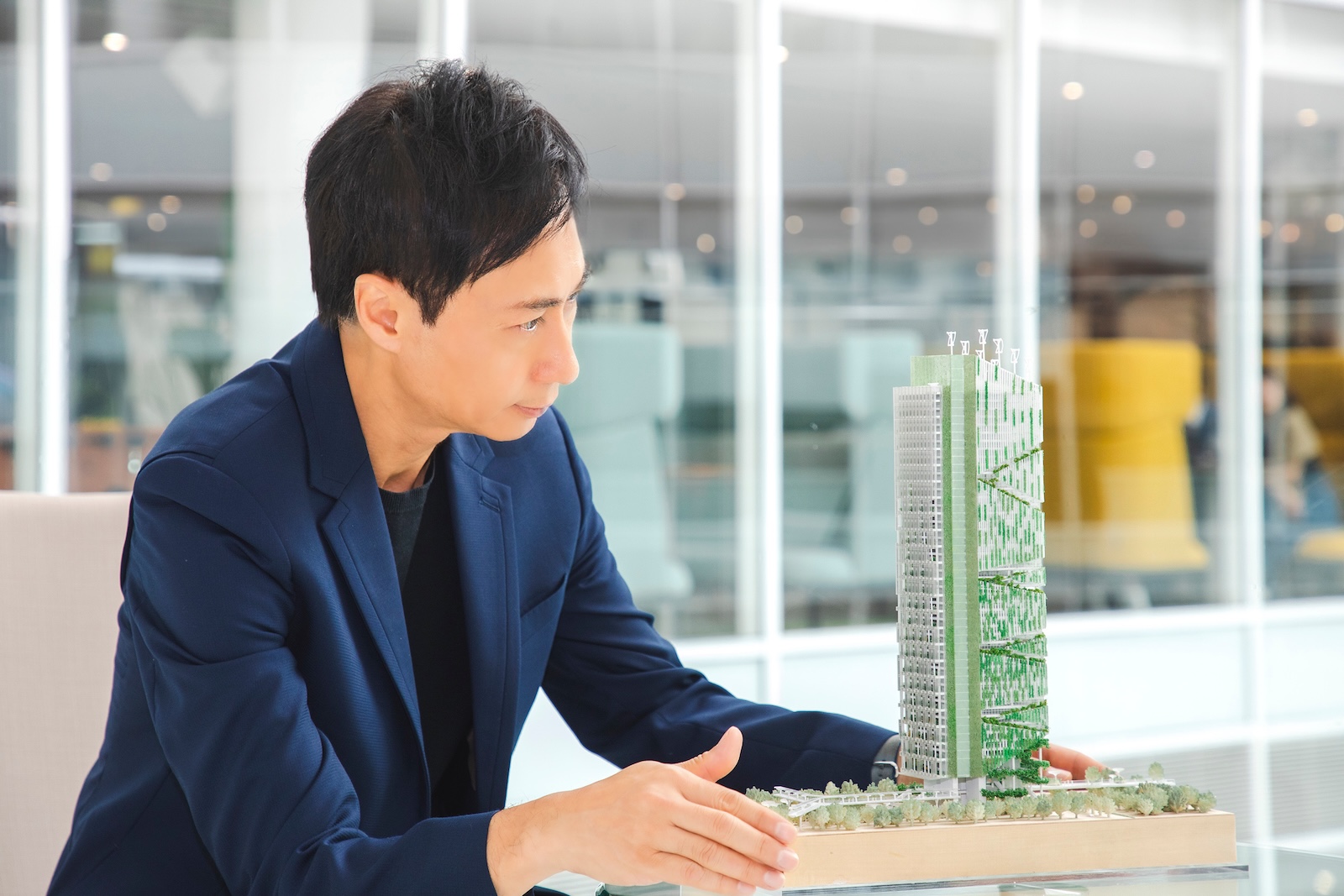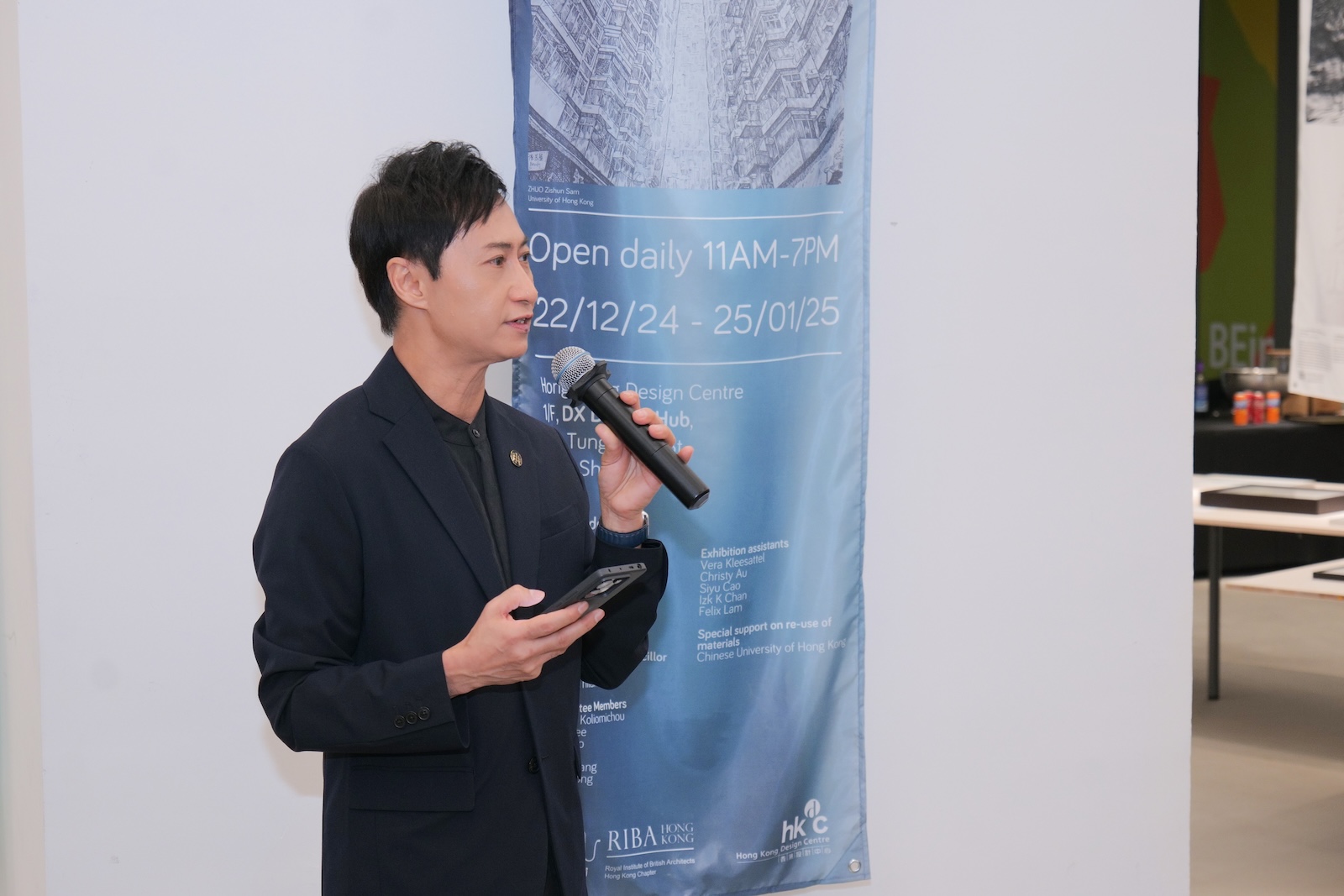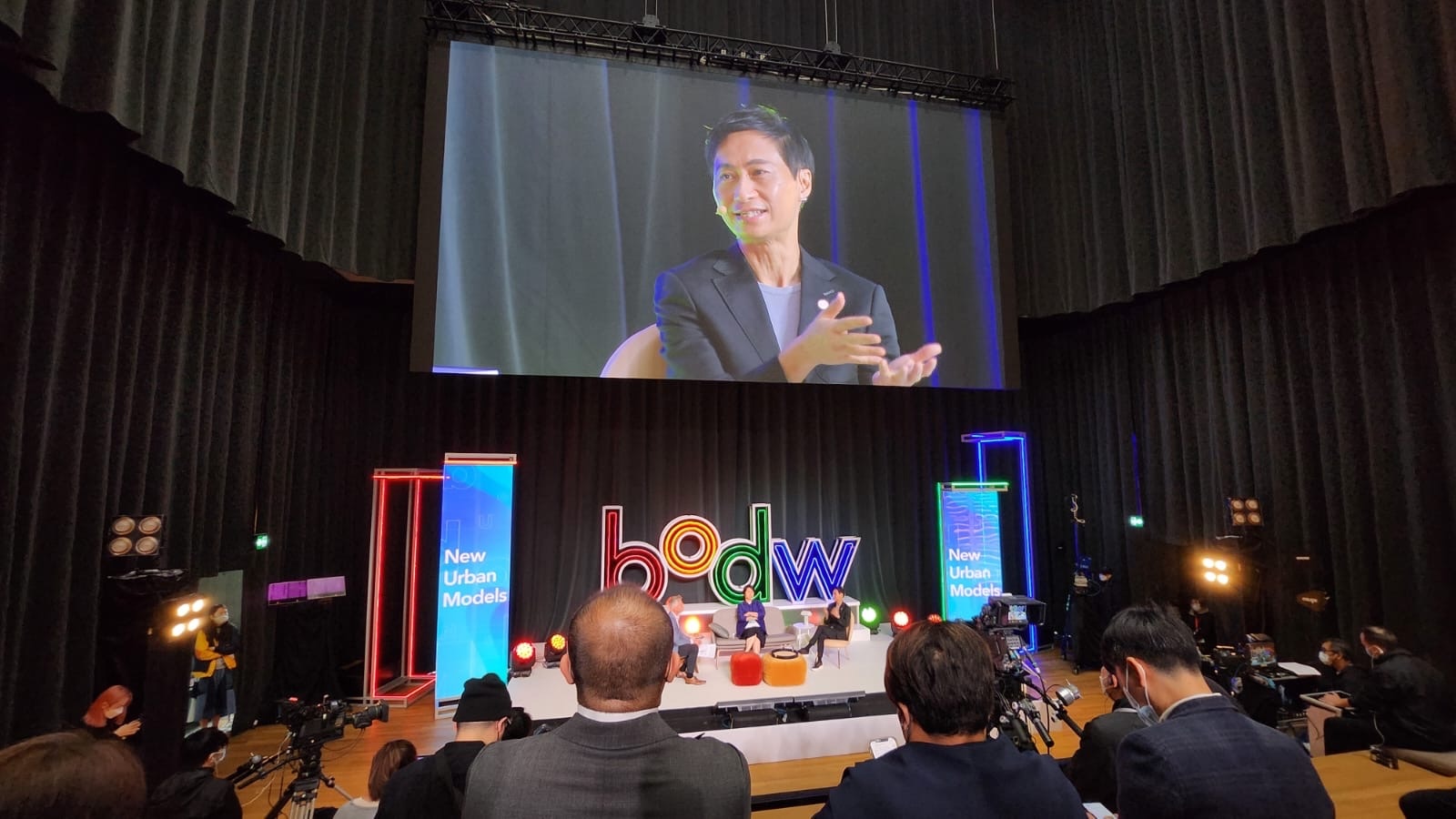
The PERSPECTIVE Interview
A champion of smart-city design
Acclaimed Hong Kong architect and urban designer Dennis Ho is passionate about embracing technology to create more sustainable and people-centric cities, exemplified by the award-winning Advancing Net Zero tower concept Taikoo Green Ribbon (pictured above) that Dennis led at ARUP, working with a multi-disciplinary team. The founder of Design_Curate_Places, a consultancy providing strategic advice about innovative urban solutions in Southeast Asia, and Chair of the Hong Kong chapter of RIBA, talked about his bold ideas and projects in this fascinating interview with PERSPECTIVE.
PERSPECTIVE: What are the key challenges or opportunities facing Hong Kong today from an architectural perspective? How can architects best respond to them?
DENNIS: Hong Kong is a compact, super high-density, and highly efficient city. With this also comes along unique challenges such as the need for well-designed public open spaces, interconnectivity between urban centres and their natural surroundings, utilization of the waterfront, pedestrian-prioritised streets, more comfortable outdoor environment, ageing population and building stocks, sensitive urban renewal, greener and more adaptable buildings. The government is also prioritizing the growth of infrastructure, transportation, affordable housing, resource management, tourism, I&T industries especially in the Northern Metropolis area. They provide ample short to long-term opportunities for architects in the region.
Architects in Hong Kong are well-placed to capture these opportunities, upskill themselves with the required design and technical knowledges, to transform Hong Kong into a much more attractive, liveable and people-centric city, whilst responding to the evolving economic and social growth. We need to be more agile and progressive in our approach, and to work closely with the wider industries and policymakers, to make our city smarter more resilient and future-proof. Our professional institutes in Hong Kong and across the region, collaborate regularly to provide the necessary discourses, knowledge sharing and continued professional development. We already have highly knowledgeable international expertise on our doorstep to leverage on, to learn from, to set new benchmarks in the region, and to create world-class exemplary design.
PERSPECTIVE: To what extent is technology having on you and your work as an architect? Is AI a threat that may replace talent or a tool that will assist our industry?
DENNIS: I was incredibly fortunate to have worked with Richard Rogers on many landmark projects where exploring technology and working with engineering expertise was a prerequisite for the design process. This has shaped my belief and approach enormously. Historically, many architects have relied on technology to create unique architecture, epitomized by the ‘High-Tech’ period producing landmarks such as the Centre Pompidou by Piano + Rogers, and the HSBC Headquarters by Foster & Partners. The Henderson by Zaha Hadid Architects is a new generation of super-smart buildings that demonstrate the impact of cutting-edge building technology. As our city and its multi-faceted challenges evolve, architects need to continue to embrace technology, driving innovation in design, delivery, construction methodology, resource management, safety, materials, energy captures.
The architecture profession has unfortunately gained a bad reputation for its poor work-life balance and being too compliance-driven. With the advancement of AI and digitalisation, we are now able to reduce repetitive and mundane work, making our workflow and design process much more efficient, effective and enjoyable. More importantly, AI, IoT, VR technologies have enormous power and capability that allows us to optimise complex multidisciplinary design across the industry, especially in visualization, automation, sustainability and buildability. These technologies ought to be developed towards achieving our goals, creating new possibilities that complement rather than taking away from the unique skills and talents of architects who possess the creativity and human sensitivity to design places that inspire, uplift and invigorate our spirits and well-being.

While fully embracing technology, Dennis also highlighted the importance of preserving the art of manual design drawing at the Art of Sketching exhibition in Hong Kong earlier this year.
PERSPECTIVE: What advice would you give a young person considering a career in architecture?
DENNIS: A question that I get asked regularly: ‘Is there a future in studying Architecture?’ The simple answer is yes, even though there has been a noticeable drop in the number of students enrolling in the subject due to economic uncertainty, rising interest and remunerations in other careers. Architecture is still a very fulfilling long-term profession if you are interested in not only creating inspiring and beautiful places, but also in making positive social and environmental impact through sustainable and future-forward designs. It’s a lifelong career that requires patience, tenacity, agility, curiosity and immense passion, in addition to being creative and sensitive to the needs of the users and their environment. If you possess those attributes and enjoy working in a highly collaborative community, architecture will provide the right career opportunity.
Now more than ever, our profession needs to diversify multilaterally to tackle increasingly complex challenges. Our roles are increasingly extending across different fields and disciplines. We will require architects who are interested and knowledgeable in a range of subjects such as city planning, urban innovations, nature-based solutions, environmental design, policymaking, community engagement, business and financial development, education. There is a very wide spectrum of architecture-related specialist subjects that a student can explore and develop their interests in, making architecture one of the most exciting and rewarding disciplines.
PERSPECTIVE: How can architecture adapt in a meaningful way to cope with changing social needs?
DENNIS: Similar to several other major cities in region, Hong Kong faces the challenges of ageing population and ageing building stock. Historic districts such as Sham Shui Po, Mong Kok, To Kwa Wan, will become major areas for urban renewal where architects can play a key and influential role in. However, we need to have a better understanding of both tangible and intangible drivers such as local heritage, demographics, urban identities, market growth, adaptive re-use, connectivity, stakeholder and community needs. Our design and interventions need to sensitively bridge across current and future social fabrics to create continuity and synergies between old and new societal needs.

A sought-after speaker for his strategic insights into urban planning, Dennis is captured here at the Business of Design Week conference
Post-covid, we have seen a greater shift in work-life balance where social and community needs require design innovations in our public spaces, working and living environments, community and leisure amenities and so on, to create a greener, more adaptable, and sustainable lifestyle. A master plan that I have led recently in the Northern Metropolis places distinctive focus on a major outdoor green and activity spine that becomes the identity and the social heart of the I&T district, promoting social collaboration and interaction. The recently published ‘Well-being Design Guide’ by the Hong Kong Housing Authority is another good example how architects can collectively create better communities through urban integration, intergenerational and inclusive living, health and vitality, green and sustainable living.
PERSPECTIVE: Sustainability has been a major factor over many years in architecture. Sometimes governments (and clients) embrace sustainability but at other times there is a resistance often dictated by economic factors. What can architecture do to embrace sustainability and drive the positive impact that it has on society?
DENNIS: Sustainability is becoming an intrinsic driver of architecture that we can no longer afford to separate the two subjects if we were to achieve our decarbonization goals. There are huge benefits in green and sustainable buildings that can transform our cities beyond environmental benefits. They give our cities identities, purposes and points of reference. They can work with nature, to enhance the well-being and liveability of our cities. They heighten our awareness of the climate challenges ahead and their impacts. And they motivate us to innovate and to work collaboratively in finding the right solutions. They will make our cities more responsive, resilient and humanistic.
To achieve our green imperatives, we need to set goals and objectives right at the outset of the projects with our clients, stakeholders and users in mind. We need to work closely and extensively with industry experts to provide innovative, cost-effective, implementable and integrated design. A multiple award-winning advancing net-zero tower concept that I have led, ‘Taikoo Green Ribbon’, organized by HKGBC, is an example where current and future technologies are integrated to create an ultra-low energy and zero-carbon design that also brings nature, biodiversity, and wellness back into the urban centre, manages, re-use, and captures resources intelligently, creating a new green urban lifestyle in high density cities.
Part of my manifesto as Chair of the RIBA Hong Kong Chapter is: ‘As architects, we have the capability and responsibility to influence how we design, build and inhabit our cities sustainably and intelligently.’ With a collaborative mindset, we can play a key role in shaping the wellness and sustainability of the city, giving our communities purposes, identities and longevity.
Profile
For more information about Dennis Ho, check out his profile here.
Cover image credit: A multi-award winning Advancing Net Zero tower concept ‘Taikoo Green Ribbon’ that Dennis led at ARUP, working with their multidisciplinary team.